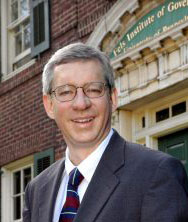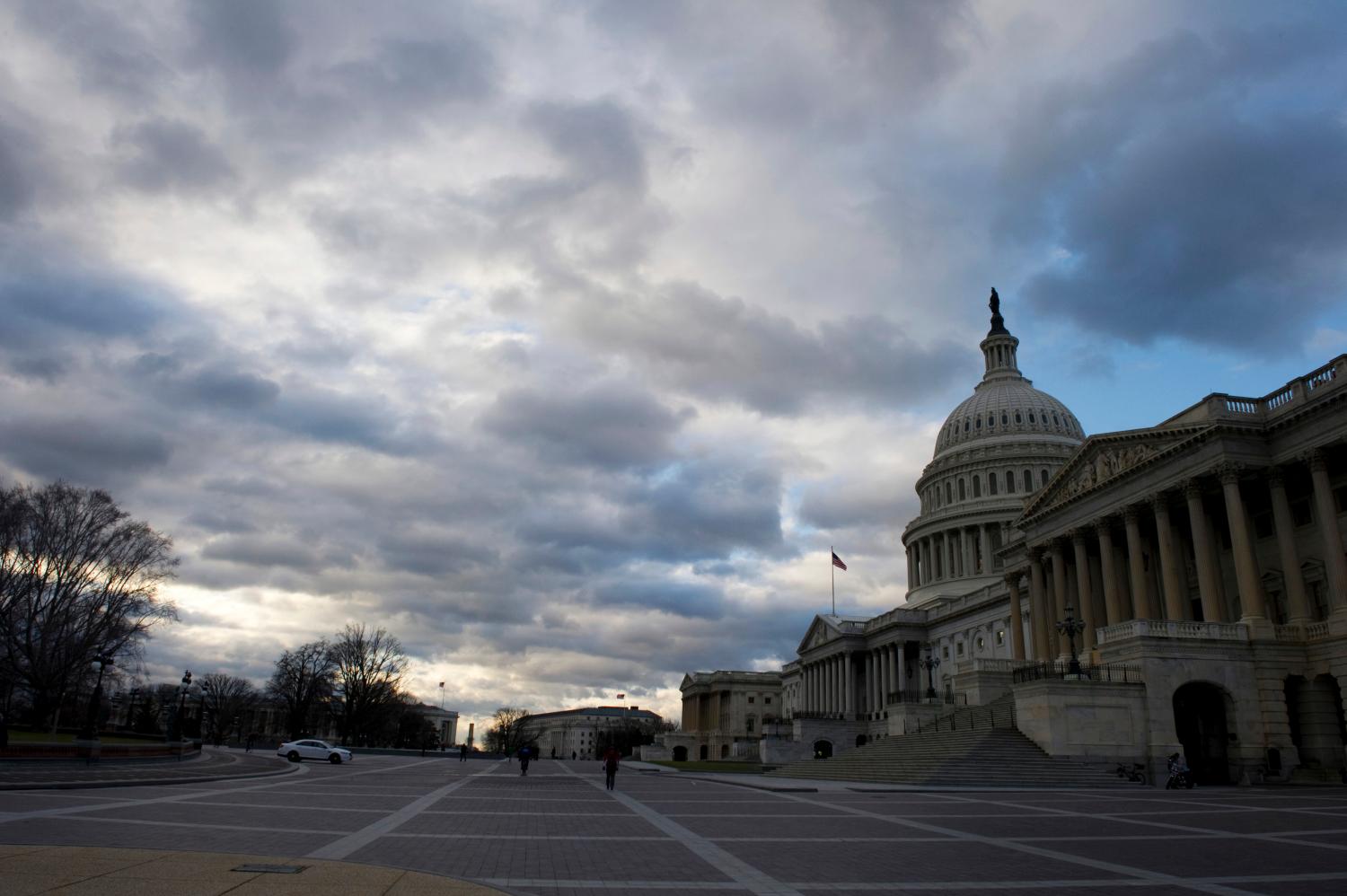As we near the 30th anniversary of Earth Day and the creation of the Environmental Protection Agency, it is time to take stock of what our environmental policies have accomplished, and the limitations they must now overcome. Along with the demonstrable victories of cleaner air and water, the first generation of environmental policy has also engendered ungainly bureaucracies, high costs, political polarization, and a litigious atmosphere. Market-based approaches, consensus-building, non-point-source regulations, and performance-based measures are all promising strategies for the second generation of environmental policy, but none by itself is a panacea. Moreover, along with organizational and technological challenges, we must address fundamental questions about who should determine our environmental goals.
POLICY BRIEF #37
As the thirtieth anniversary of the first Earth Day and the creation of the Environmental Protection Agency (EPA) approaches in 2000, a tough question looms: What will the next generation of environmental policy look like? The first generation of environmental policy made substantial progress. Air pollution, for example, dropped significantly even as the nation’s population, automobile miles driven, and industrial production grew. But what will constitute the next generation of environmental protection? There is no support for declaring victory and deregulating the environment. At the same time, however, the costs—economic and political—of current environmental policy have risen to the point that continuation of this regime is unsupportable. How can we maintain the first generation’s commitment to a clean environment, develop new strategies for attacking problems that the first generation left unanswered, and crack the tough economic and political dilemmas that the first wave of environmental regulations left in its wake?
Lessons from the First Generation
The first generation of environmental policy accomplished several things:
- The regulations unquestionably produced dramatic environmental improvements. Many dirty waters became swimmable, fishable, and drinkable again. Boston Harbor, Galveston Bay, and the Connecticut River are all far cleaner. Even Cleveland’s Cuyahoga River, famous for its oily film, obnoxious smell—and for catching fire in 1969—now sports tourist cruise ships and only occasional visible residue. The war on air pollution has reduced smog, even in places like Los Angeles, and some waste dumps have been reclaimed while others have been safely contained.
- But despite the wins, the first generation left major economic and political problems. Companies increasingly are complaining about the high cost of compliance. Estimates of the costs of meeting environmental regulations vary widely, from the Office of Management and Budget’s estimate of $144 billion per year to $185 billion annually, as researchers from Johns Hopkins University contend. These large costs, not surprisingly, engender complaints and often resentment from the businesses that must pay them. These businesses complain that the rules have outlived their usefulness, that they cost jobs, and make American firms less competitive with companies abroad. Environmental regulations have become so contentious that it is an article of faith in the environmental community that any important regulation will end up in court. The litigiousness of the process increases the costs and aggravation of everyone involved. It makes the EPA hyper-cautious in drafting regulations, companies hyper-concerned about potential impacts, and environmental groups hyper-sensitive about the risk to environmental quality of a process hard to predict, let alone manage. The constant battling and bickering adds enormously to everyone’s costs, often without producing significant environmental gains.
- The economic and legal costs of the system have increased the political stakes. In 1995, Republicans used environmental regulations as a key example in their campaign to reduce the cost of federal rules. “I am a conservationist,” said Tom DeLay (R-Tex.) about the Clean Air Act, “but I do not believe in being a Gestapo-type government imposing regulations on the American public.” Democrats capitalized on the Republican campaign to portray themselves as protectors of clean soil, water, and air and, when the dust cleared, the EPA’s conservative opponents had retreated.
- The EPA found itself squeezed between a status quo increasingly hard to defend and new problems that existing policies were inadequate to solve. The EPA would not be killed, but neither could it remain unchanged.
Challenges for the Second Generation
Although the EPA has fought off political challenges, it faces new problems that it cannot easily attack with its existing tools. While the first generation focused on reducing the kinds of pollution for which sources could be readily identified, the second generation must tackle a dual problem. First, some pollution sources were left relatively untouched by the first generation. Second, the first generation of rules had great difficulty in attacking non-point source pollution—pollution without immediately identifiable origins. The second generation thus faces the tough challenge of devising new, more cost-effective strategies for even more difficult pollution problems.
The great advances in the first generation of environmental policy came in addressing pollution from point sources: cars, factories, and other sources of pollution where regulators could establish a direct link between the cause and the effect. That, in turn, allowed them to develop pollution-reducing technologies. In cars, for example, special canisters and new engine designs have dramatically reduced automobile exhaust pollution. Scrubbers have removed particles from factory smokestacks while new sewage treatment technologies have made rivers cleaner. But while there has been substantial progress in reducing point source pollution, further gains are increasingly costly because the easy victories from technological improvements have already been won.
Reducing automobile and manufacturing pollution has often proven much easier than lessening contamination from large poultry ranches, fertilizer runoff from farms, and the growing environmental risks from homeowners dousing their lawns with pesticides. Such non-point source pollutants pose an important challenge to the continuing campaign to clean the environment. Fertilizer runoff into rivers, for example, threatens both the balance of life downstream (fish die if water becomes too nitrogen-rich) and the long-run sustainability of agriculture (short-term overuse of fertilizers can disrupt the long-run productivity of the land). Traditional command-and-control regulations work poorly against non-point source pollution problems.
To complicate the problem, such non-point sources are virtually universal and extend from large commercial operations to individual families. More is required than just installing new technology, like smokestack scrubbers or catalytic converters. Widespread sources of pollution create a new breed of complex collective-action problems. No strategy can be successful without developing creative new technologies along with broad participation and behavioral changes by almost everyone. Further complicating the issue is the growing recognition of pollution problems such as global warming that know no national boundaries. The collective-action dilemma is not limited to local communities or even national policies. Reducing non-point source pollution problems, especially greenhouse gases, requires policy strategies that encompass the world. The second generation requires a fresh, boundary-spanning approach: across technologies, geographic boundaries, environmental media, and socio-economic groups.
Non-point source pollution dilemmas also stretch across the EPA’s traditional media based focus, in which regulation has been organized by air, water, and soil. Companies have long complained that the EPA’s media based approach has sent a constant parade of different inspectors into their facilities. This multiplies their costs and complicates their operations. Moreover, some environmentalists have begun arguing that such a fragmented approach reduces the effectiveness of environmental regulations and prevents citizens from exercising an effective voice; it is the company’s operations, after all, that are being regulated, not the different media. Reformers have argued for an approach that is more place- than media-based: one set of environmental standards to cover an operation; one integrated set of permits to regulate them; and one inspector to oversee the overall pattern of compliance. For an agency that has long been both Washington-based and media-centered, such a geographical focus poses enormous challenges.
First-generation problems remain unresolved as these new second-generation issues arise. Hundreds of Superfund toxic waste dumps remain untreated. Fifty years of nuclear weapons production have left a cold war mortgage that will take perhaps a century to pay. For example, in Hanford, Washington, toxic and radioactive sludge—in many cases the exact composition and potential risks are unknown—are seeping from buried underground tanks toward the Columbia River. Dangerous gases are building in other tanks and threaten to explode. In cases of both Superfund and radioactive waste, the cleanup will require quite literally hundreds of billions of dollars, scores of years, and new approaches that lie beyond currently affordable technology. The savings-and-loan bailout of the 1980s pales in comparison.
These second-generation problems stretch the EPA far beyond its traditional ways of doing business into complex new partnerships—with other nations, with state and local governments, with private companies, and with citizens. They pose daunting technological—and political—problems. Most importantly, they focus as much on governance as management. They require the EPA to chart new relationships with those who share responsibility for environmental quality. Increasingly, that means building partnerships with everyone involved.
Second-Generation Environmental Strategies
The central problem for twenty-first century environmental policy is how to develop new strategies for attacking new environmental problems, how to develop better strategies for solving the old ones, and how to do both in ways that are more efficient, less taxing, and engender less political opposition. The most promising strategies move from a front-end approach, designing and enforcing regulatory systems, to a back-end focus, setting goals and allowing participants to determine how best to meet them. If the first generation of environmental strategies was concerned with compliance, the second generation promises to focus on performance. The EPA is pursuing two strategies: market-based approaches designed to use competition to increase efficiency; and federalism forces designed to build new state-federal partnerships.
One market-based approach with which the EPA is experimenting is emissions trading. Coal-fired and oil-fired power plants and industrial boilers, for example, produce sulfur dioxide, which rises into the atmosphere and later falls as acid rain. Under the EPA’s guidance, states establish ceilings on allowable sulfur dioxide emissions. Some companies have found it cheaper than others to reduce emissions; they get credits, which they can sell to other companies that find the job more expensive. Traditional regulation would have mandated all operations to reduce pollution to the same level, regardless of cost. Emissions trading uses the competitive market to define who can best reduce pollution and how. Through it, the EPA was able to reduce sulfur dioxide emissions by 30 percent, and to reduce compliance costs for boiler operators to less than command-and-control regulations would have permitted. Satisfied with its success, the EPA is planning an expansion of emissions trading to other pollutants, including nitrogen dioxide, a key component of smog.
For all its merits, however, emissions trading has sharp limitations.
It works only for pollutants for which markets can be established. This requires the ability to measure the pollutant and clearly identify its origin, which makes the practice difficult to apply to non-point-source pollution. It requires agreement on allowable levels of pollution, which makes it difficult to apply to high-risk carcinogens and nucleotides, cases in which even minimal exposure can prove dangerous. Such judgment calls also make it difficult to apply to pollutants with high political visibility (and, therefore, political risk). Emissions trading requires the ability to isolate the pollutant and its effects, which makes this approach a difficult fit for companies with complex cross-media pollution problems. Finally, it requires the ability to create and sustain a workable market, which limits the technique to large-scale operations with the capacity to cost out their alternatives. (Reduce pollution below the ceiling and sell the credits, or buy credits from other operations because it costs less than meeting the standards?) Small companies are likely to find it difficult to play such a complex game. These problems leave emissions trading an important, useful, but ultimately limited twenty-first-century strategy.
For other problems not readily reducible to pollution markets, the EPA has been quietly exploring new performance-based partnerships with the states. Although the EPA has long devolved operating responsibility for environmental regulations to the states, new experiments give them far greater responsibility for designing and maintaining environmental management systems in exchange for reports on their performance. Over the last 25 years the states have become the EPA’s front-line managers for many regulatory programs. The process has often proven just as burdensome to the states as the regulations have been for private companies. The states, not surprisingly, have proven just as fed up as the private sector with the high costs of the current system and have led the charge for performance-based partnerships.
The transformation of environmental devolution from enforcement to performance has proven widely attractive. Making it work, however, requires solving two tough problems. The first is building the partnerships and holding them together. The partnerships depend on building trust by measuring performance, but this technology is now rudimentary at best. The strategy, therefore, requires constructing new measurement methodologies. The second problem is building the confidence of everyone—companies, environmental groups, neighborhood associations, state regulators, the EPA, and elected officials at all levels—in the process and its decisions. Because performance-based systems tend also to be community-based systems, success depends on getting the groups who often warred in the past to work together. That in turn requires building trust among the participants in both the performance-based process and the results it produces.
Underlying all of these issues is the public interest puzzle: While the battles over environmental regulation often become enmeshed in hyper-technical how questions, they typically boil down to critical who problems. Who will shape environmental policy? Whose values will prevail? How will the decision process be structured, and whose voices will be heard? Many environmental groups are quite frank in asserting that they view performance-based regulation as a tactic to turn more decisions over to private industry and to state environmental agencies they have captured. Performance measurement, they fear, is simply an effort to reduce government’s commitment to a clean environment. So, along with the big questions of the cost of regulations for all players comes the problem of devising a structure for resolving those questions. Who speaks for citizens, and how should their voice be heard?
The process, then, is not only about reducing the costs of environmental regulation while improving environmental quality, but also about reconstituting the process of environmental debate and defining which values prevail. On one level, then, this is a problem of environmental performance. On a broader level, it is about how reshaped intergovernmental partnerships will affect how America is governed.
Environmental Policy for the New Millennium
The challenge of environmental policy for the new millennium is to do everything that the first generation of environmental policy did—but to do it better—and to devise a second generation of environmental policy to solve problems that the first generation did not or could not. At the core of the second generation is a shift from inputs (including inspections and rulemakings) to outcomes (most notably performance). It seeks to reduce everyone’s costs, lower the political heat, and improve results. But even more importantly, the second generation of environmental policy revolves around fundamental and richly layered questions of governance:
- Policy. What should be the nation’s policy toward the environment? How much are we willing to pay for how much environmental improvement?
- EPA Management. Since the second generation requires new management technologies, how can the EPA effectively develop and prove these new technologies? And since many of these technologies are experimental, the EPA will have to maintain first-generation regulations while perfecting second-generation strategies. What problems will the EPA face in simultaneously pursuing two so different regulatory approaches?
- Devolution. The second-generation strategies involve substantial devolution to private markets and state governments. How can the EPA construct the trustworthy performance systems required to make the market- and federalism-based systems work effectively?
- Participation. Because the second-generation strategies heighten the importance of reaching beyond traditional boundaries, how will these boundaries be overcome—and who will reach beyond them? The more second-generation environmental policy problems emerge, the more everyone—governments, companies, and citizens, in the United States and around the world—must come into partnership. How will these partnerships be created and sustained?
The second generation of environmental policy promises to create the mother of all devolution projects, with implications even greater than welfare reform. The political and administrative relationships are, if anything, more complex. Yet the state of knowledge is far less than in welfare reform.
It is a policy arena of massive experimentation, uncertain results, complex relationships, and an inescapable mandate for improvement. It is clear that neither the EPA nor the states can stay where they are. It is equally clear that they must learn to go where no one has gone before. Market incentives are part of the mix, but they fail to attack many of the hardest problems. Those problems are being left to the states, with the states held accountable to national policy through performance measurement. While many states have eagerly seized the flexibility that environmental partnerships offer, many of them so far have used the tool primarily to smooth the paperwork processes. Preventing pollution, improving environmental performance, and integrating approaches across media have lagged behind. The performance-based process, therefore, is more an embryonic idea than a proven practice.
The states will be wending their way through the intricate interrelationships of companies, interest groups, cross-media pollution problems, and technical uncertainties. This devolution requires solving tough political problems—most notably building a consensus that is trustworthy. It also requires increasing management capacity—especially to produce the environmental performance measures on which the system depends.
Within the environmental community, there are powerful forces betting that the states will fail; they are ready to call for a retreat to first-generation command-and-control regulations. Among opponents of environmental regulation, there are powerful forces ready to renew the call for rolling back the rules. Finding a route between these regressive reactions will require skillful navigation. The EPA will be in the wheelhouse to steer the effort. But the states will be manning the oars.
The Brookings Institution is committed to quality, independence, and impact.
We are supported by a diverse array of funders. In line with our values and policies, each Brookings publication represents the sole views of its author(s).



